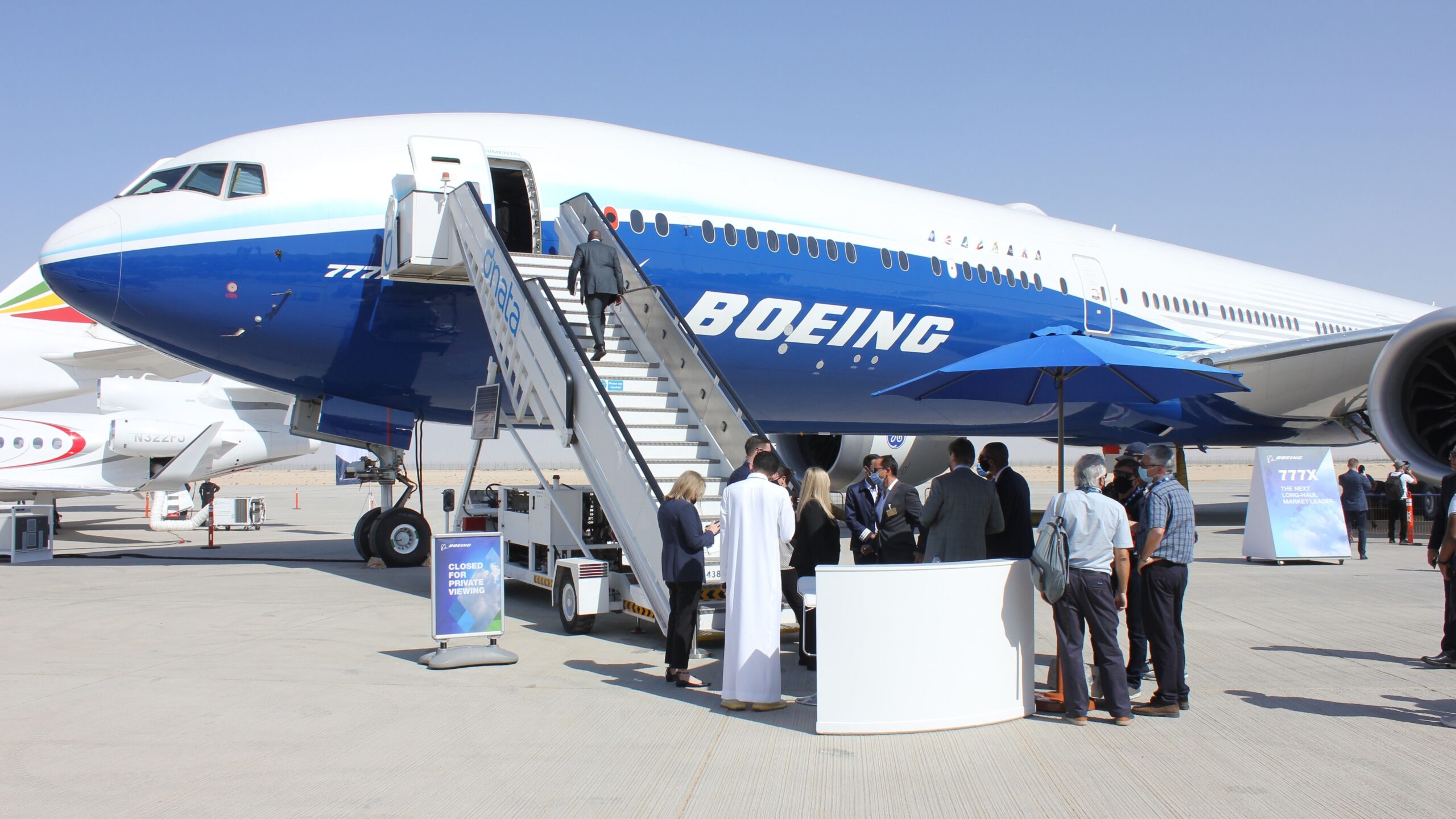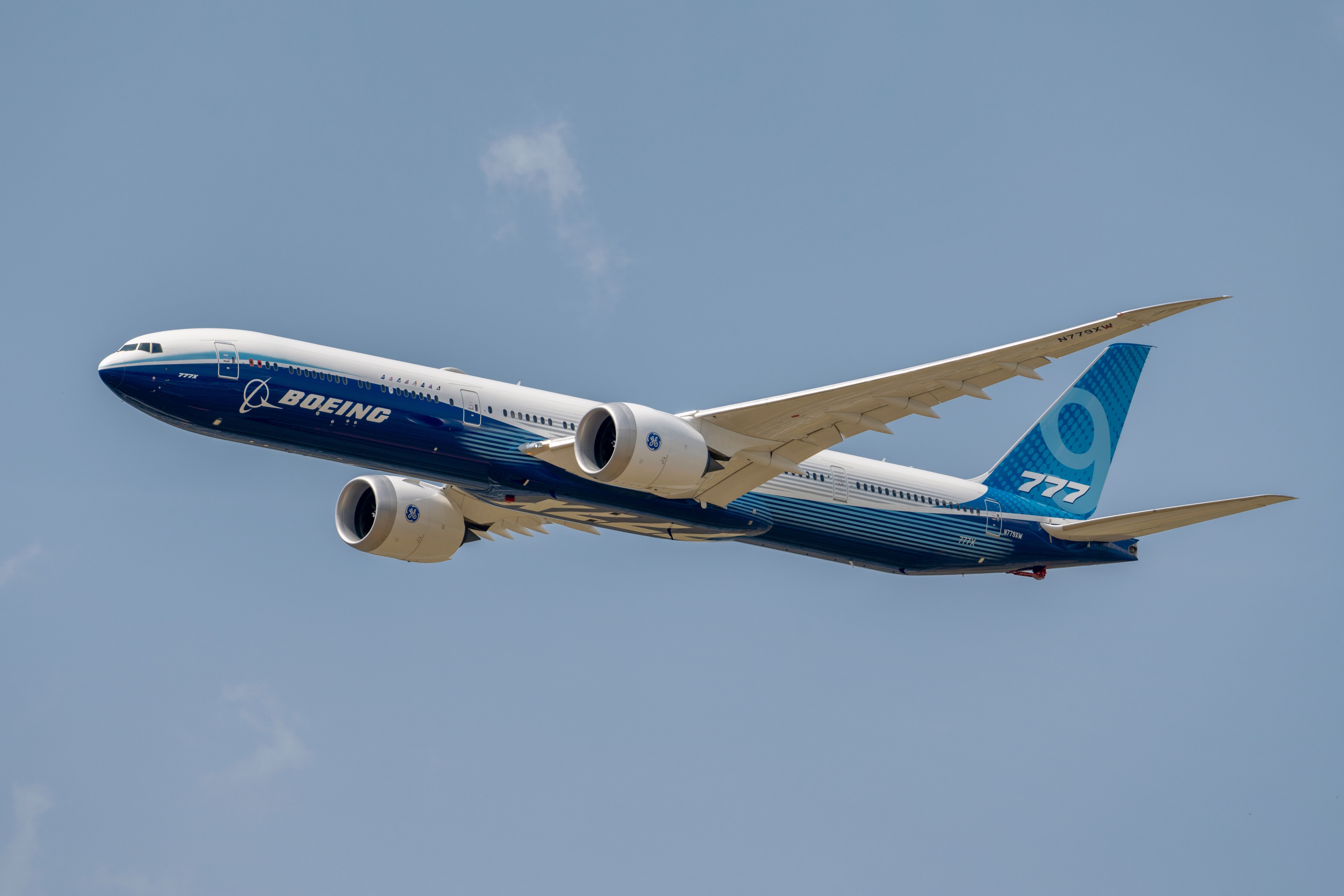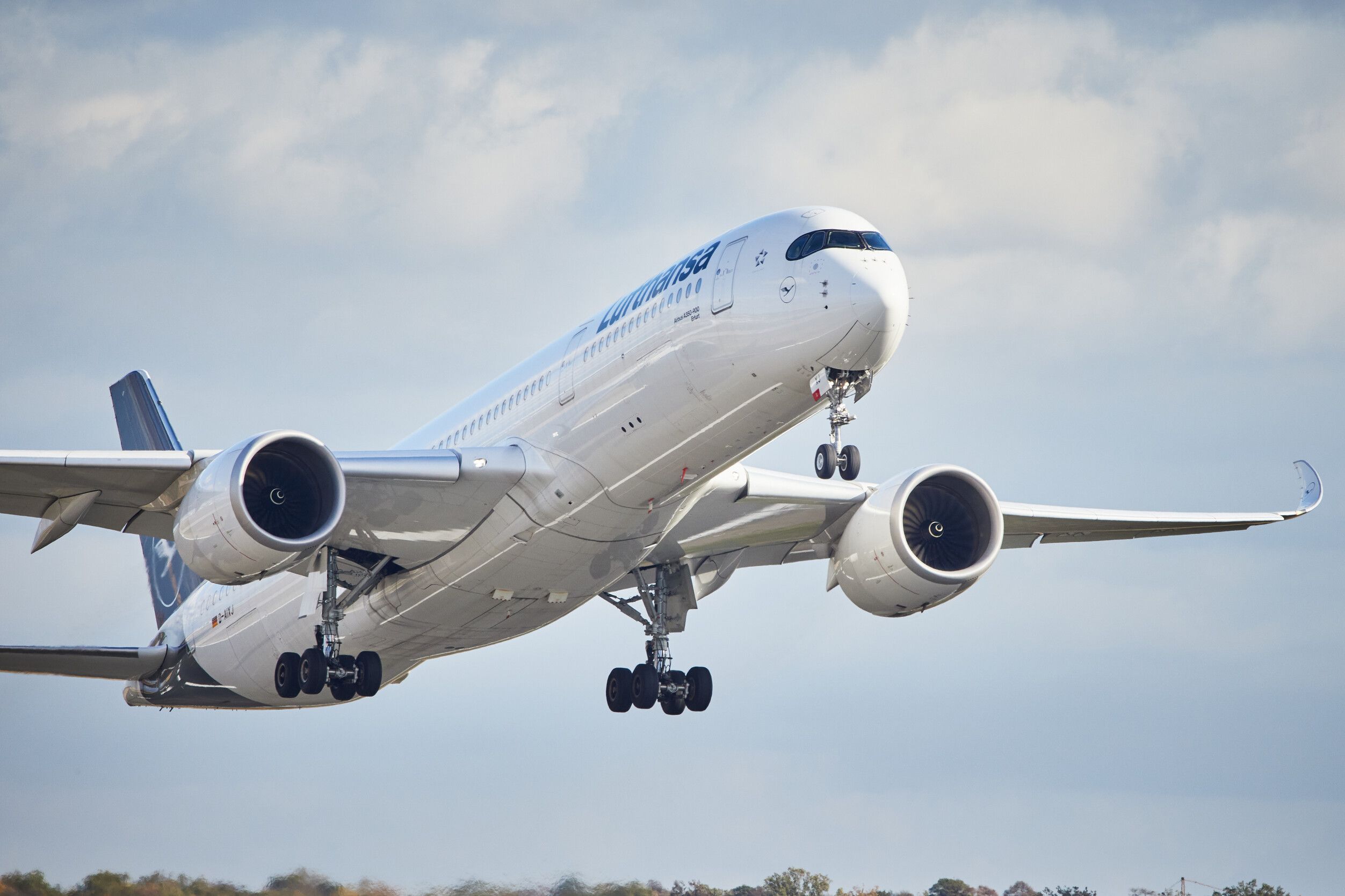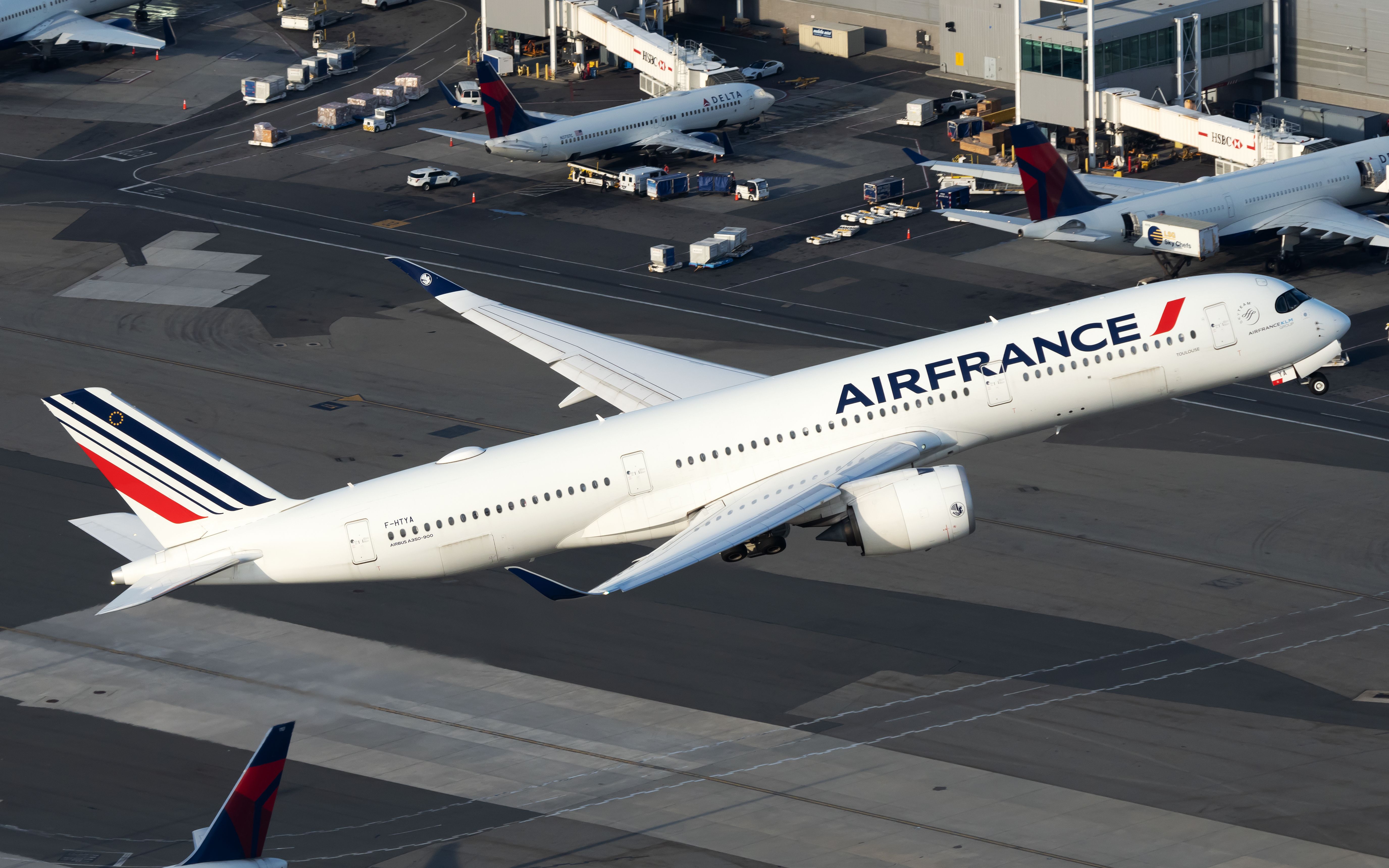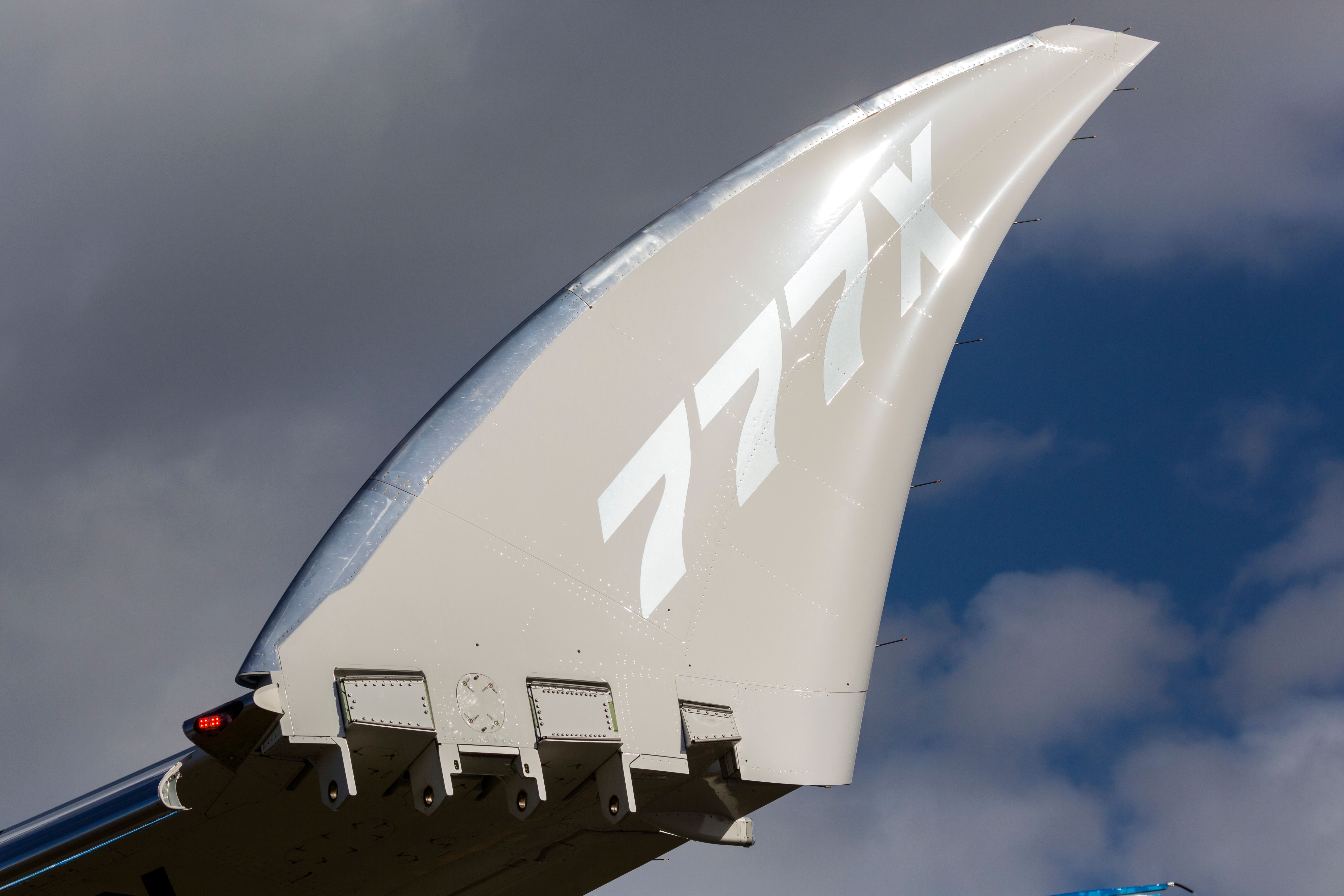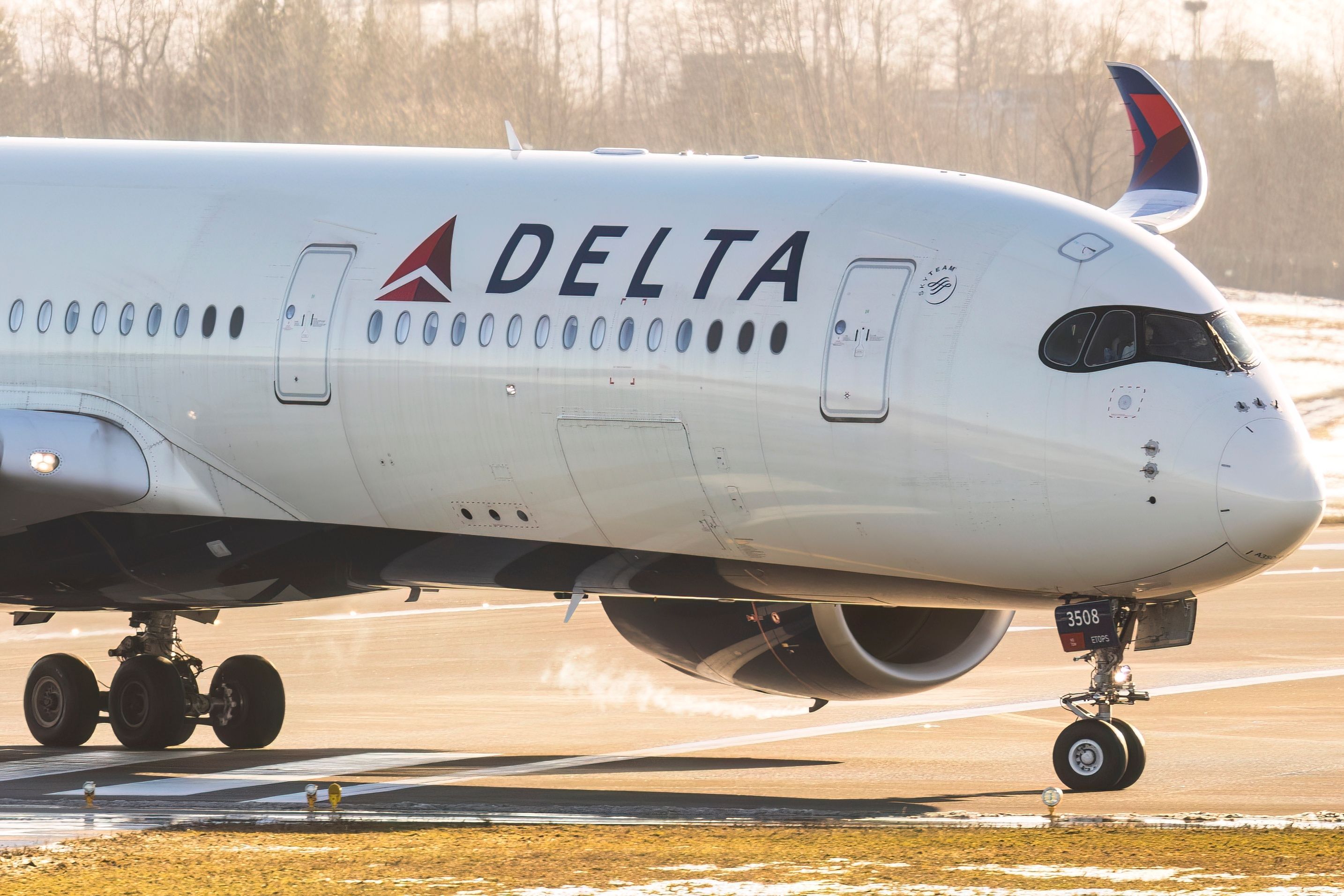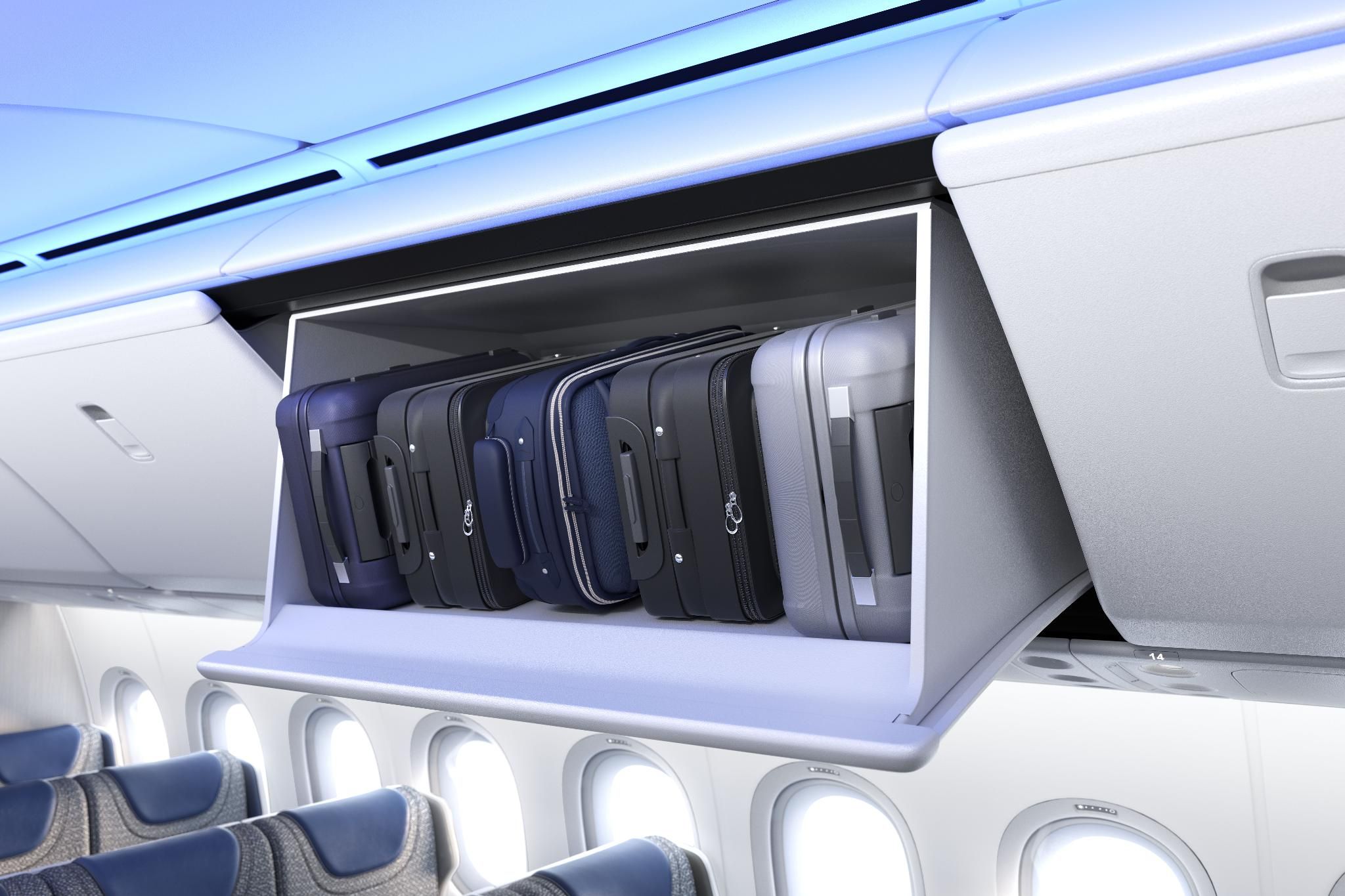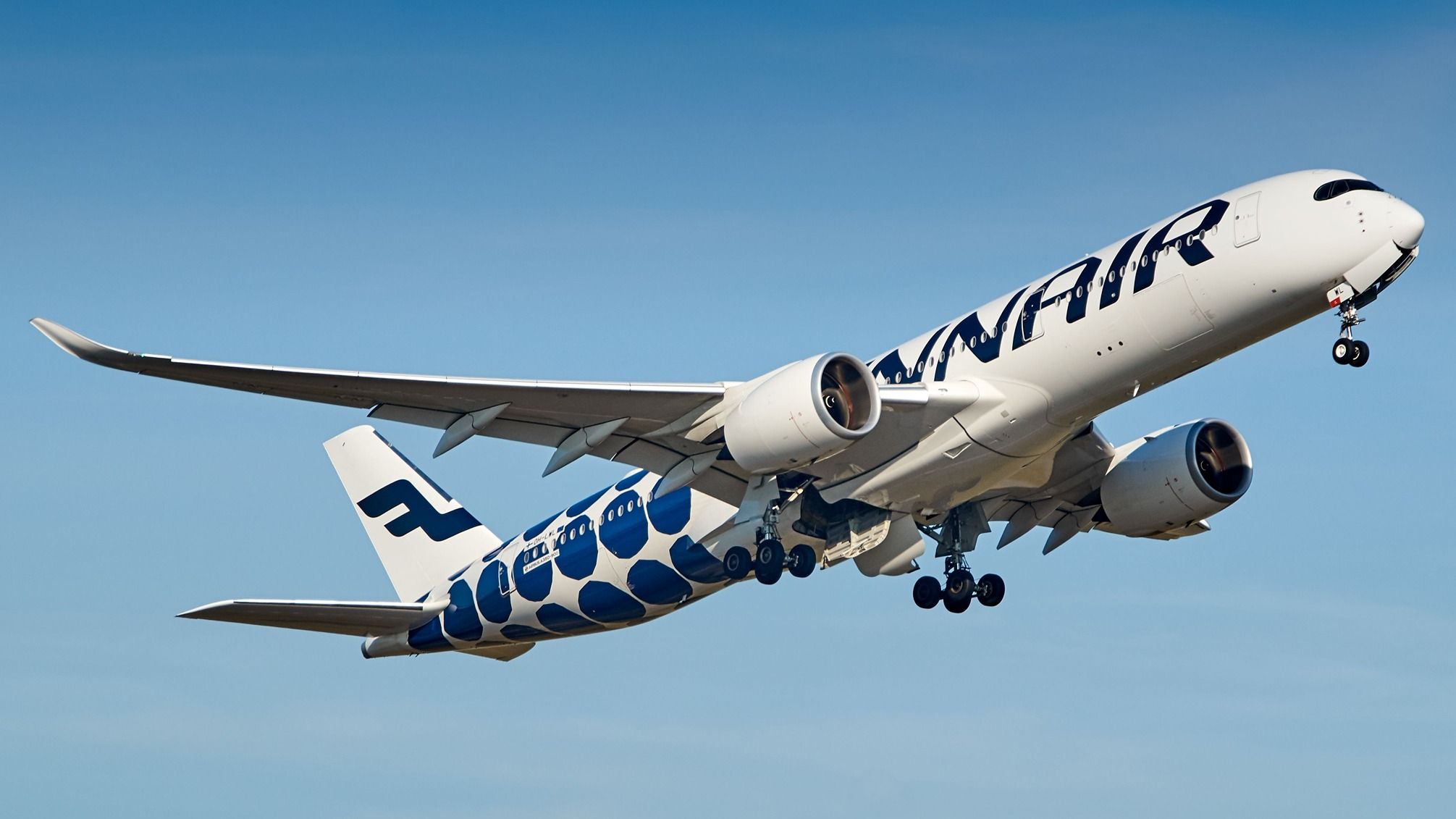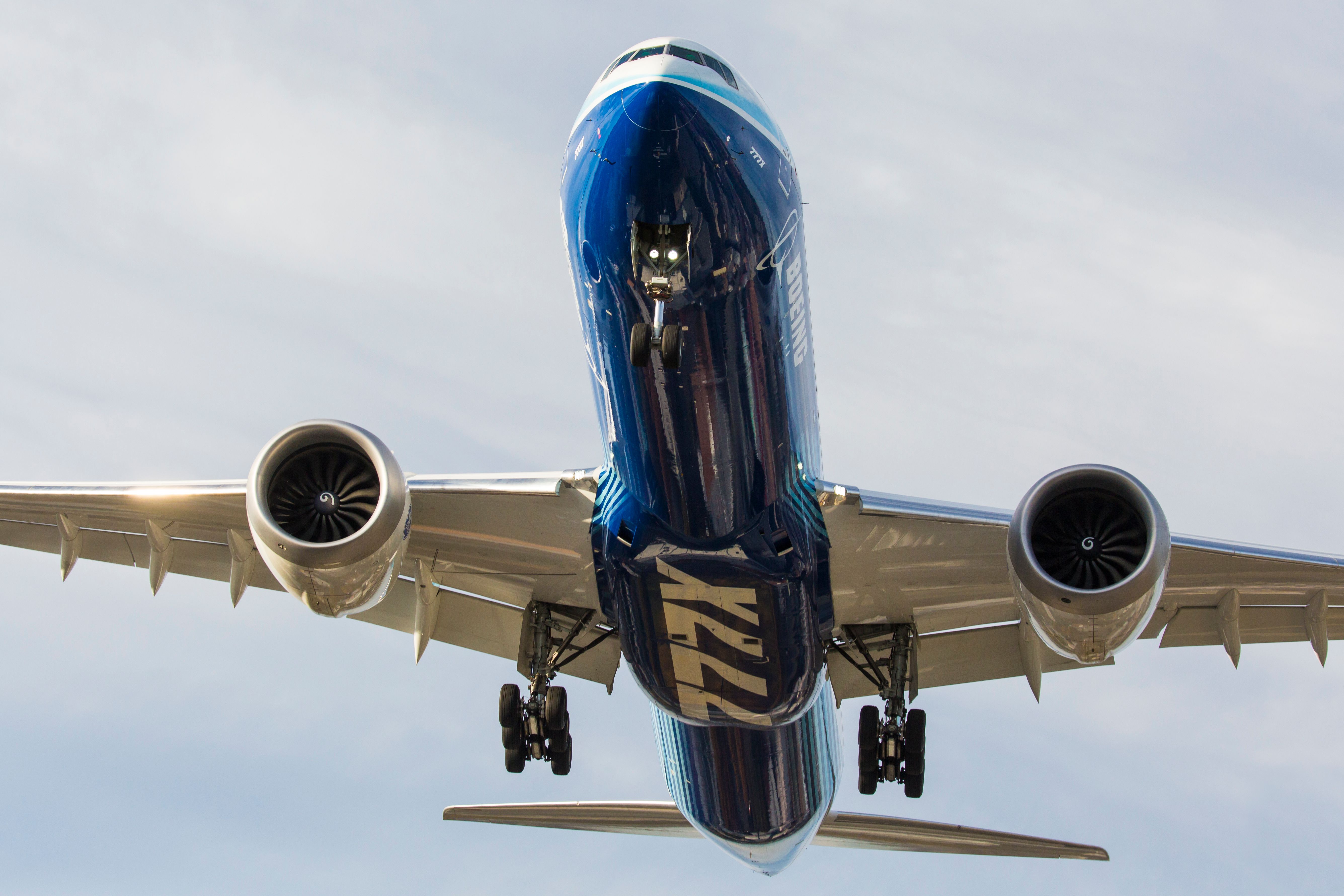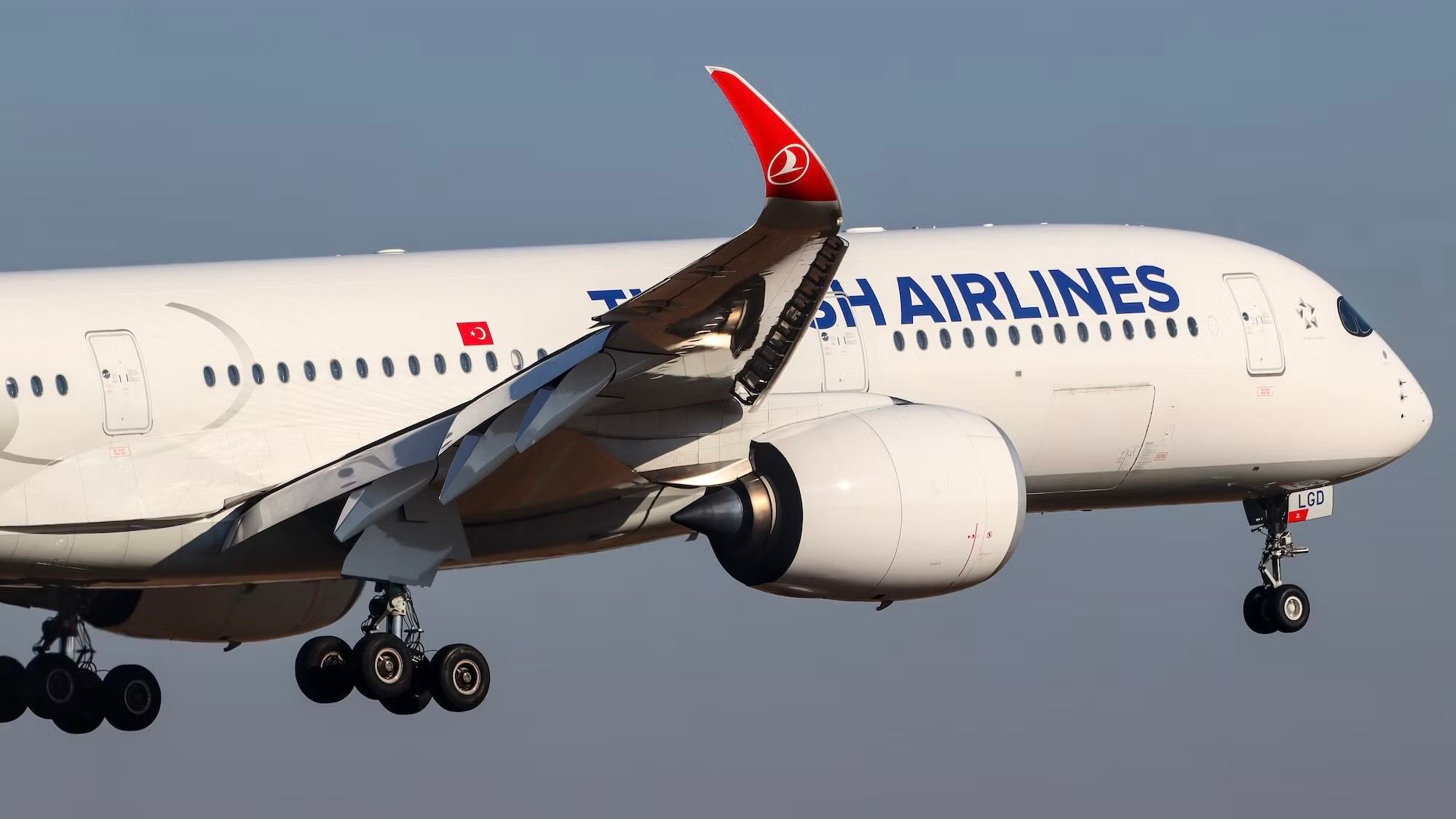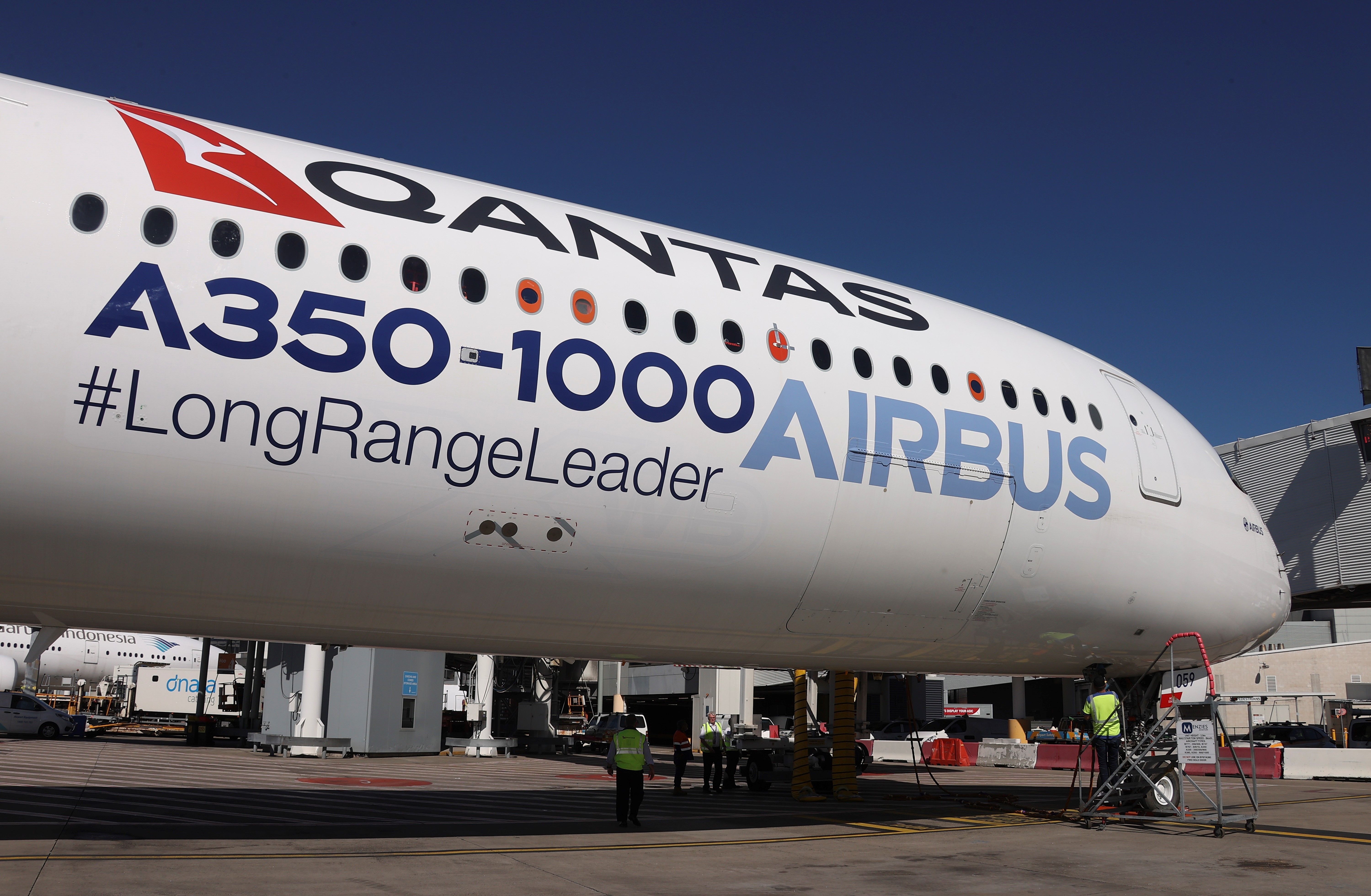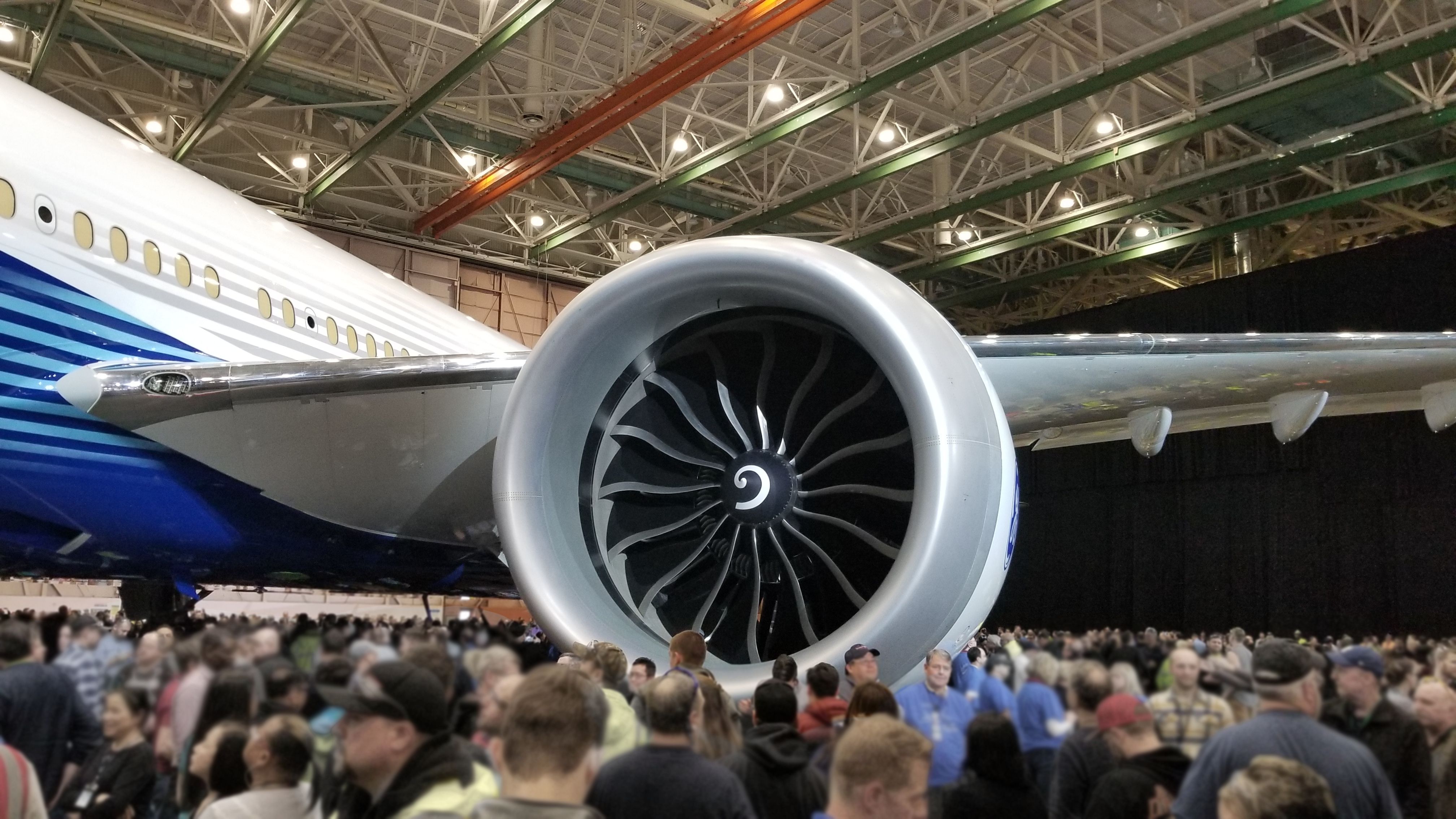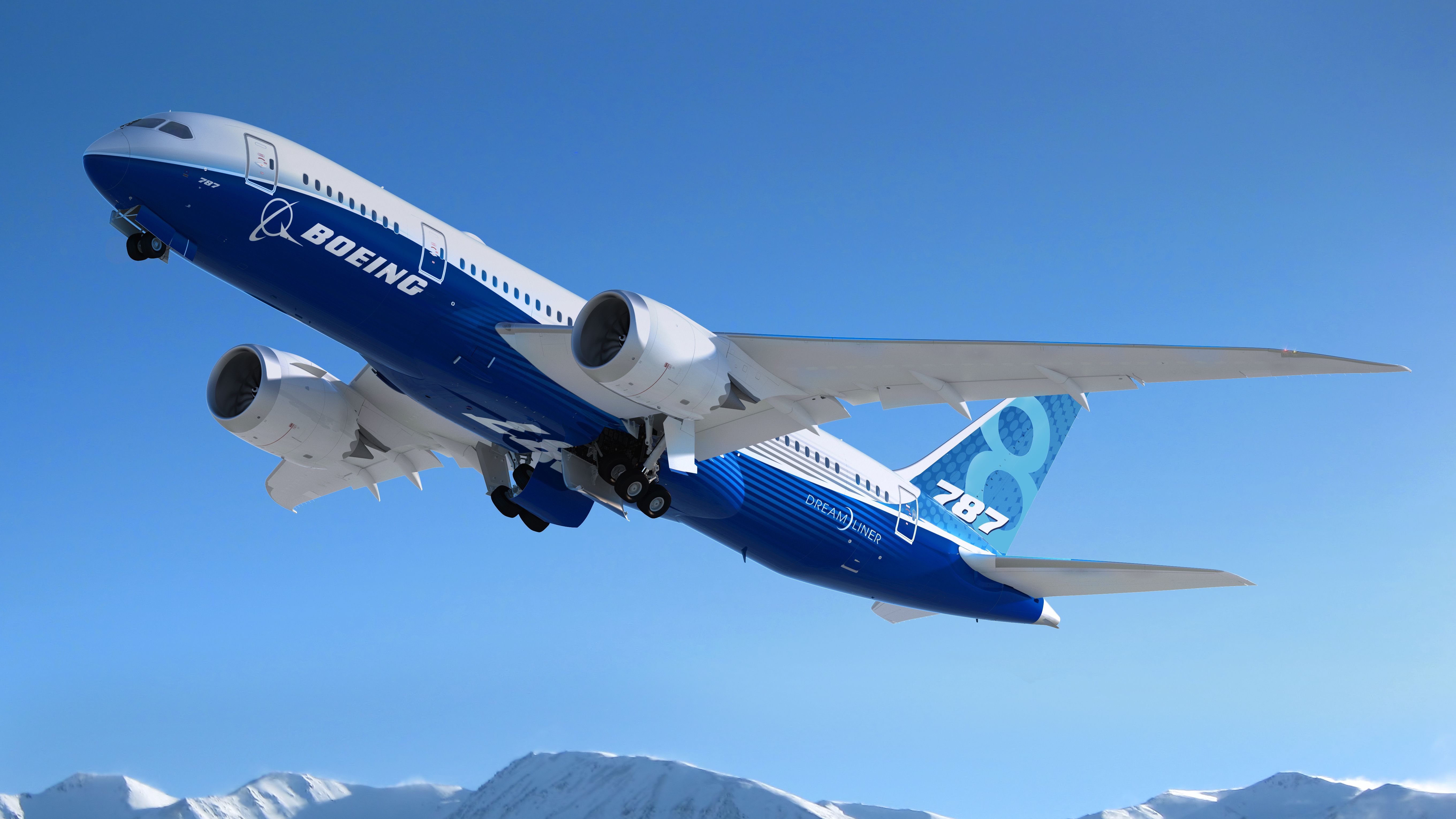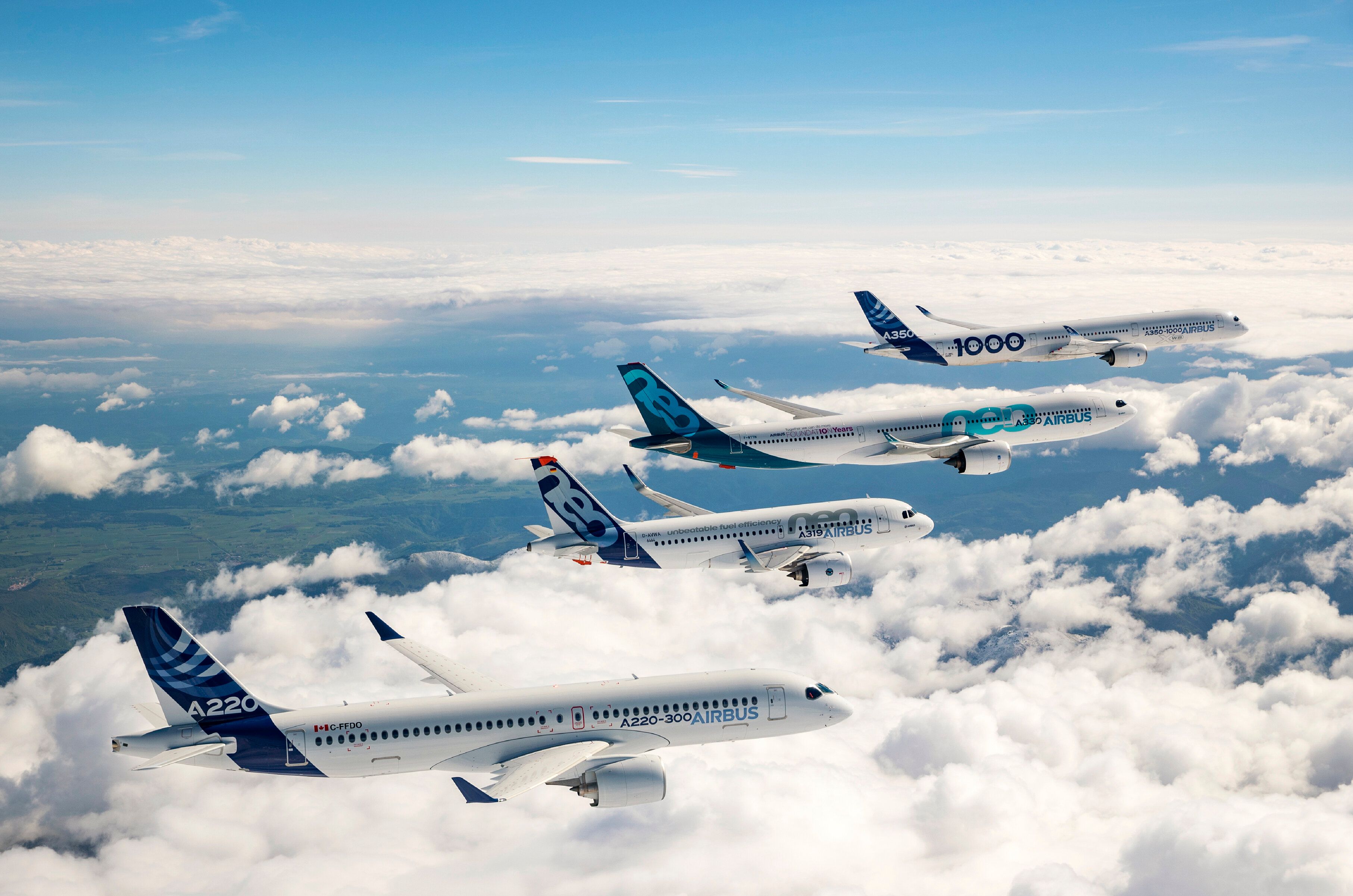The 777X is Boeing’s largest widebody, hoping to dominate the high-capacity, long-haul market when deliveries begin in 2025. But the giant aircraft, with its iconic folding wingtips, will have to outpace its nearest competitor, the Airbus A350, to gain market share. Which aircraft is better – the Boeing 777X or the Airbus A350?
Introducing the two contenders
The Boeing 777X is the world’s largest twinjet ever built. Its enormous engines and unprecedented wingspan promise to bring unbeatable fuel efficiency and usher in a new era of high-capacity, long-range flying. After significant delays to the project, the aircraft is currently undergoing rigorous flight testing, although it won’t arrive with airlines until at least early 2025.
Photo: Tom Buysse | Shutterstock
The Airbus A350 is now the largest widebody aircraft built by the European manufacturer since it ended production of the A380. The aircraft is meant to cater to both the medium- and long-haul markets, competing with both the 787 and 777 families. Built using advanced composite materials, it is the lightest widebody aircraft currently in production, and Airbus says that this leads to 25% lower operating costs and a quieter, more efficient operation.
Photo: Lufthansa
The Boeing 777X is yet to be delivered to any airlines, while the Airbus A350 has been flying since 2015. There are currently more than 560 A350s in service worldwide, with two variants available – the A350-900, the launch type, and the A350-1000, which came into service in 2018.
The 777X will eventually be available in two passenger variants – the 777-8 and the 777-9, although the larger 777-9 will arrive first. There will be a 777-8F cargo aircraft, too, which has sparked interest from the likes of Lufthansa and Cathay Pacific. Boeing has also toyed with the idea of stretching the 777X to create the 777-10 if there is sufficient demand in the future.
Boeing 777X and Airbus A350 orders
Boeing’s orderbook has fluctuated due to the pandemic and the project’s repeated delays. As of today, the 777X has over 360 firm orders. By far, the most significant order has come from Emirates (115), followed by Qatar Airways (74) and Singapore Airlines (31).
The Airbus A350-900 entered service in January 2015 with Qatar Airways, while the larger A350-1000 took its first revenue flight in February 2018, again with Qatar Airways. Today, there are more than 560 A350s in service around the world, with the largest operators being Singapore Airlines (63), Qatar Airways (58), and Cathay Pacific (46). Emirates is also set to receive 50 A350s from 2024.
Photo: Vincenzo Pace I Simple Flying
As of October 2023, Airbus has received a total of 1056 orders for its A350 aircraft, including the A350-900, A350-1000, and A350F:
|
Type |
A350-900 |
A350-1000 |
A350F |
|
Orders |
791 |
226 |
39 |
|
Deliveries |
487 |
78 |
– |
In terms of which aircraft has achieved the most orders, the A350 is unsurprisingly strides ahead of the 777X. However, this is an unfair comparison, as it has been offered for sale for far longer overall and has, therefore, had more time to acquire significant orders. The pandemic also impacted sales and orders across the industry for over two years. With the recovery now well underway and Boeing still ironing out the 777X introduction timeline, order comparisons will be clearer in the coming years.
Onboard technology
Both the A350 and the 777X have some incredible, next-generation technology onboard. While many of the improvements seen in the two widebodies are directed toward fuel efficiency, passenger comfort has also played its part in the designs.
Photo: BlueBarronPhoto | Shutterstock
The 777X will be the largest twin-engine jet aircraft in the world. Building on the success of its predecessor, the 777, and employing some advancements seen in the 787, it is Boeing’s most ambitious aircraft to date. Some of the key improvements include:
- Composite wings: The use of composite materials in the wing construction allows the 777X to have the biggest wingspan of any commercial passenger aircraft.
- Folding tips: To keep the 777X in a lower size category and not limit the airports it can use, Boeing has designed it with folding wingtips.
- Largest engines: The giant GE9X engines are all-new and designed specifically for the 777X. They are the largest aircraft engines in the world and the most efficient, using composite fan technology for more power and lower fuel burn.
- Aerodynamic efficiency: The raked wingtips, huge wingspan, and all-new engines add up to significant fuel savings and greater efficiency.
- Cabin comforts: Inspired by the Dreamliner, the cabin of the 777X will be wider, with large windows, optimized pressurization, mood lighting, and improved architecture for a more comfortable passenger experience.
Photo: Karolis Kavolelis | Shutterstock.
The A350, despite its earlier release to the market, also pushed the boundaries with technologies onboard, including:
- Lightweight construction: The A350 is made from 53% composite materials, which are lighter and more durable than traditional aluminum. It also has titanium and aluminum alloys, making it super light and robust.
- Adaptive wings: Taking inspiration from nature, the A350’s wings actually ‘flap’ while in flight. This is not so much as to be noticeable to the eye, but slight movements allowed in the wings make for reduced drag and lower fuel burn.
- Quiet engines: The Rolls-Royce Trent XWB engines are quieter and more fuel-efficient than its current competitors.
- Aerodynamic efficiency: Like the 777X, Airbus worked to make the A350 as aerodynamic as possible. Specifically, it employed computational fluid dynamics (CFD) in developing the Airbus A350XWB, a technique that improves the external shape for minimum drag.
- Cabin comforts: State-of-the-art air conditioning, mood lighting, and intelligent pressurization work together to reduce jetlag. Straight sidewalls, a wider cabin body, and vast amounts of storage space all add up to a more enjoyable passenger experience.
Capacity, range, and fuel efficiency
Both aircraft offer immense seating and cargo capacity, but the 777X is the larger of the two. Regarding passenger capacity, the A350 can seat between 315 and 369 passengers in a typical two-class configuration. The maximum capacity for the two variants, the -900 and the -1000, is 440 and 480, respectively. Boeing advertises the 777X as seating up to 384 on the 777-8 and 426 on the 777-9 in a two-class configuration.
Photo: Boeing
In terms of layout, the A350 typically sports a nine-abreast configuration in economy, with a typical 18-inch width for each passenger. However, some airlines have squeezed an extra seat into each row, reducing seat width to just 16.5 inches. The 777X will have a ten-breast layout, which is the same as the existing 777, but the aircraft’s wider cabin should make for a more comfortable journey.
Regarding cargo, the A350-1000 can take a payload of 68 tons and has a capacity of 44 LD3 containers. The smaller -900 can carry a payload of 53.3 tons and accommodate 36 LD3 containers. To compare, the 777-9 will have a cargo capacity of 48 LD3 containers, although its payload has not yet been published.
Another key figure to compare is the maximum takeoff weight or MTOW. This is something Airbus had an issue with concerning the A380 in the past – the aircraft was so heavy that its MTOW was exceeded before the available cargo space was filled, which is why a cargo variant was never produced.
Photo: Wirestock Creators | Shutterstock
For the 777-9, the MTOW has been pitched at 775,000 lb, while the A350 has 617,295 lb for the -900 and 696,661 lb for the -1000. However, it’s essential to recognize the weight difference of the aircraft itself. Here are the published weights of these aircraft, along with a few more for comparison:
- Airbus A350-1000: 284,000 lb (129,000 kg)
- Boeing 777-9: 400,000 lb (181,400 kg)
- Boeing 787: 285,000 lb (129,000 kg)
- Airbus A330: 268,675 lb (121,870 kg)
Although it is clearly a big and heavy aircraft, the A350 shaves vast amounts of weight off its frame thanks to modern materials.
When it comes to fuel efficiency, the 777-9 has a fuel capacity of 350,410 lb for a maximum range of 7,285 NM. As a rough calculation, it burns around 48 lb of fuel per nautical mile. The A350-1000 has a fuel capacity of 274,808 lb and a maximum range of 8,700 NM, which equates to a fuel burn of around 32 lb per nautical mile.
Photo: BlueBarronPhoto | Shutterstock
Of course, that’s not the whole story because airlines are concerned with the fuel burn per passenger. Considering that (with a typical two-class layout), the A350s burn per seat is 0.09 lb per nautical mile. The 777-9, in comparison, comes out at 0.11 lb per seat per nautical mile. Naturally, each manufacturer considers their widebody aircraft to be more efficient than their competitor’s, and there are far too many variables, such as sector length and loaded weight, to make a comparison.
Verdict: It’s a draw; the 777X’s higher capacity could make it a winner, but the A350’s lower unladen weight might just edge it.
Other vital statistics
Here is a quick rundown of all the vital statistics side-by-side for easy comparison. For the sake of simplicity, this is the 777-9 against the A350-1000.
|
A350-1000 |
777-9 |
|
|---|---|---|
|
Length |
242 ft 1 in (73.78 m) |
251 ft 8 in (76.72 m) |
|
Wingspan |
212 ft 5 in (64.75 m) |
238 ft 10 in (72.80 m) |
|
Wing area |
4,768 ft2 (443.00 m2) |
5,562 ft2 (516.70 m2) |
|
Height |
56 ft (17.08 m) |
64 ft 1 in (19.53 m) |
|
Engines |
2 |
2 |
|
Thrust per engine |
97,100 lbf (432 kN) |
105,000 lbf (467 kN) |
|
Total thrust |
194,200 lbf (864 kN) |
210,000 lbf (934 kN) |
|
MTOW |
679,000 lbs (308,000 kgs) |
775,000 lbs (351,534 kgs) |
|
Range |
7,992 NM (14,800 km) |
7,290 NM (13,500 km) |
|
Cruise speed |
M0.85 |
M0.84 |
|
Capacity (pax) |
369 passengers |
426 passengers |
Cost
The published prices for each jet are as follows:
- A350: The A350-1000 is $366.5 million, while the A350-900 is $317.4 million
- 777X: The 777-9 is being marketed at $442.2 million, while the 777-8 will be $410.2 million
Photo: ThaKlein | Shutterstock
Of course, airlines often achieve significant discounts on the list price, particularly if they are placing multi-plane orders. However, the 777-9 would need to be discounted by more than $70 million before it costs the same as a non-discounted A350-1000.
Verdict: The A350 wins; it is much more affordable
Ultra-long-haul
The A350-1000 and 777-9 target a growing market: ultra-long-haul. The first test was Qantas, which placed a major order as part of Project Sunrise – its mission to connect New York and London directly to Sydney. Boeing and Airbus pushed their alternatives heavily, but the latter bagged the deal as part of a major order for narrowbodies and widebodies.
Photo: Airbus
Given that Project Sunrise is scheduled to commence next year, and the 777X has now been delayed to 2025, it seems the A350 was the right choice for the Australian flag carrier.
The verdict
Time will tell if the Boeing 777X withstands the industry’s challenges, and the program has already had to overcome some significant hurdles before the aircraft has even entered into service. The A350 has not been immune to problems either, as demonstrated by the Qatar Airways paint saga, which took more than two years to resolve.
This face-off between the two manufacturing giants’ latest widebody products will be interesting to see. On paper, both are superb aircraft with similar range and passenger capacity. Will the larger size of the 777X be enough to sway airlines away from the tried and tested Airbus?
In Simple Flying’s opinion, the lightweight, agile, and adaptable A350, with its significantly lower purchase cost, will be a tough offering for Boeing to beat. However, for a mission where the maximum capacity is desired, Airbus just can’t offer anything as big as the 777-9.
All in all, Simple Flying votes for the Airbus A350 as the winner, but this is subjective. What is your opinion about the two aircraft in question? Which one takes the title? Let us know by commenting below.
Source: ch-aviation

